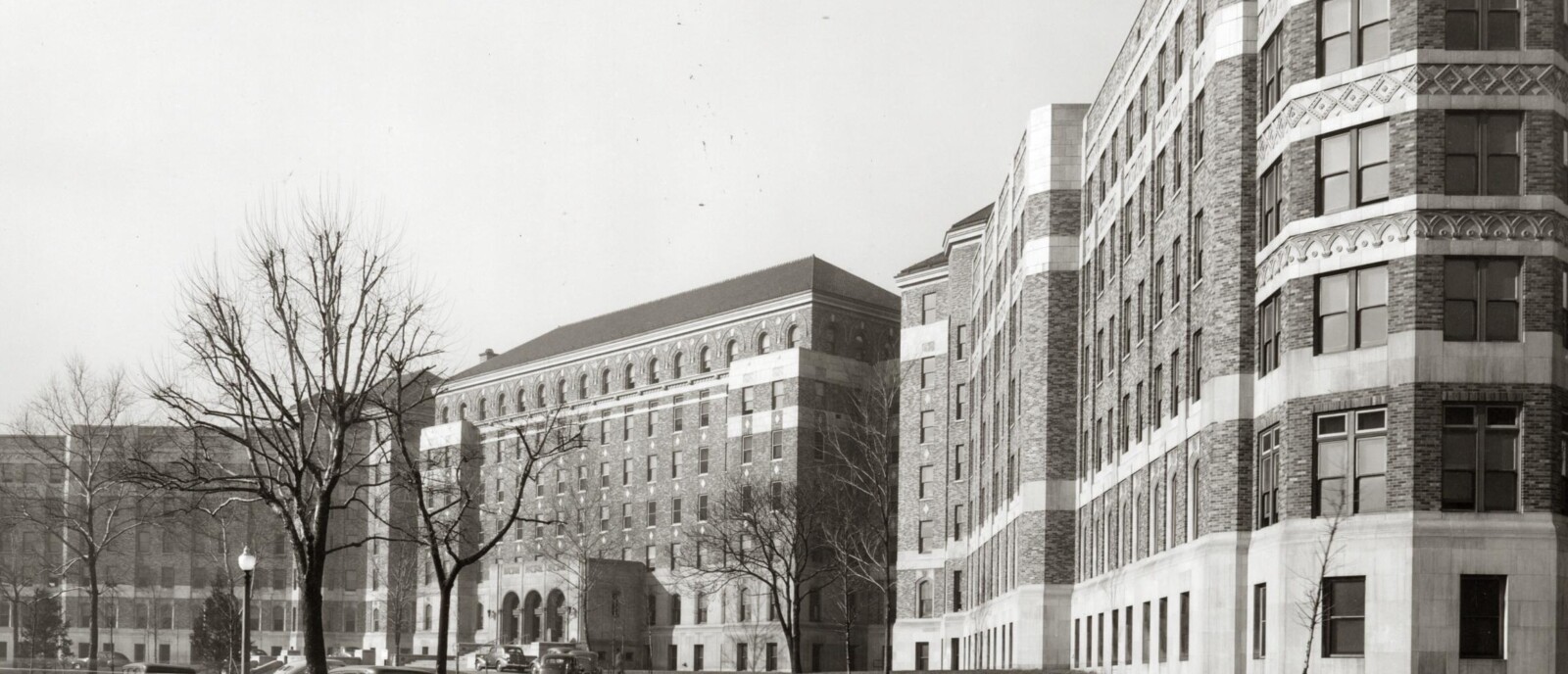One light switch lit the entire hospital ward. If a patient needed emergency care in the middle of the night, the overhead lights would flash on, and all along the rows of beds that lined the walls, patients would pop up and look around. The nurses would quickly draw the curtains around the patient in crisis, as if that provided enough privacy for a person who might be dying, as if that afforded any comfort to those who had been awakened in their hospital beds with a reminder of their own mortality.
I worked at City—officially Homer G. Phillips Hospital—as a third-year medical student in the spring of 1979. By then, the sprawling red-brick facility was more than forty years old. Covered outdoor walkways connected buildings on some of the floors, and I heard that these pigeon-marked corridors were originally designed to expose patients and staff to fresh air and thereby limit the spread of contagious diseases. Even then, it seemed unreal, like a scene from an old movie.
At the time, I did not know that City was the scene of an evolving story. It had opened in 1937 as a hospital for African Americans in segregated Saint Louis. Within a few years, it achieved national recognition for its excellent patient care and its training program for black physicians and nurses. Despite this prominence, the facility was consistently underfunded and understaffed, and it was allowed to deteriorate until it abruptly closed that summer of 1979.
But to me, everything at City was new. Perhaps that’s why I remember some of the patients so well—the young woman with encephalitis who never woke up; the alcoholics sick from cirrhosis with their yellowed skin, swollen bellies, and delirium; the thin patients with tuberculosis who sweated and coughed in isolation rooms. And I remember how the staff haphazardly covered their mouths with a mask as they entered those tuberculous rooms, apparently inured to the risk, and yet slid the meal trays of the Laotian refugees with malaria, a husband and wife, across the floor, despite the fact that their condition posed no danger.
Because the hospital was understaffed, medical students like me filled in the gaps. I pushed wheelchairs and gurneys to transport patients who needed X-rays. I fetched bags of red cells and platelets from the blood bank. When patients crashed, I ran small tubes of arterial blood to the lab, waited for the technician to run a blood gas, and ran back with the result on a slip of paper. By the time I got back, there was often another sample to be ferried. Along the way, I tried to interpret the results—pH, carbon dioxide level, oxygen saturation—what did they signify? Would this patient survive?
One day, an elderly man died while I was trying to draw his blood. He was still breathing when I put the tourniquet on his frail arm and felt for a vein. I stuck him three or four times without success and then reluctantly admitted my failure to my intern. When the intern grudgingly came to complete the task for me, he quickly sized up the situation: “Maybe your problem is that he’s dead?”
Down the block from Saint Louis City Hospital sat the public psychiatric hospital, Malcolm Bliss. After completing my internal medicine training at City, I was sent to Bliss. There I first encountered severe mental illness. I walked around the locked ward feeling wary and awkward. The patients sat on scattered vinyl sofas and chairs, usually alone, often just rocking or staring. I was supposed to converse with them. But how? One day, I was sent to evaluate a young man who had been admitted the day before. The attending physician told me to make a diagnosis. I couldn’t. The young man’s responses seemed guarded and odd, but not pathological. The attending suggested we try together, and within minutes the man was telling us about the electrodes that Martians had implanted in his brain to read his thoughts.
I learned a lot in those months about encephalitis and cirrhosis and schizophrenia. I got better at drawing blood, and I grew more comfortable around people with depression or psychosis. But more importantly, City and Bliss shaped my perspective on health and society. I saw the lopsided way that illness affects those who live on the margins. I saw the contrast between the big public wards at City and Bliss and the upscale private rooms across town. I met caregivers who didn’t seem to care, and I was inspired by the nurses who rushed to draw the curtains, psychiatrists who listened carefully, and clinicians who showed me how to feel the pulse of a common humanity.
Bliss has been demolished and City now houses the Georgian Condominiums. Some things haven’t changed. Illness still has a predilection for those who live on the margins, and there are still upscale private rooms across town.
